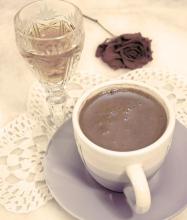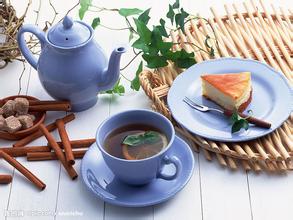Characteristics of the price of Arabica coffee
Characteristics of the price of Arabica coffee
Although coffee shops are now full of variety, in the final analysis, there are only two kinds of artificial coffee, one is Arabica, the other is Coffea robusta (canephora), both of which are introduced from wild species. However, it has low resistance to drying, frost, diseases and insect pests, especially to leaf rust, the biggest natural enemy of coffee, so all producing countries are committed to improving varieties. For example, Sri Lanka, as we all know, used to be one of the most famous coffee producers in the past, but coffee farms were not spared by leaf rust at the end of the 19th century. Since then, Sri Lanka has turned to black tea, which is also the kingdom of black tea in India.
Arabica coffee trees grow between 900m and 2000 m above sea level; they are cold-resistant, and the suitable growth temperature is 15ml / 24m; they need more humidity, annual rainfall is not less than 1500 ml, and higher requirements for cultivation techniques and conditions are also required.
Arabica coffee beans are mainly grown in South America (except Argentina and parts of Brazil), Central American countries, Africa (Kenya, Ethiopia, etc.), Asia (including parts of Yemen, India and Papua New Guinea), and a small amount of Arabica coffee beans are also grown in Yunnan, Hainan and Taiwan in China.
The bourbon species was introduced to America by French immigrants in the 18th century from the island of Island of Bourbon (today's French island of Reunion Island of Reunion, located in the Indian Ocean east of Madagascar). It is now widely cultivated in the Western Hemisphere, such as Brazil, and a small amount in Yunnan, China. The caffeine content of Bobang subspecies is 20% to 30% higher than that of Tibica subspecies, but less than most coffee subspecies.
Arabica is deeply loved by Chinese people with a short history of coffee contact because of its strong fruity aroma. it was introduced to China by missionaries in the 19th century and widely planted in Panzhihua, Sichuan, and the dry-hot valley of the Jinsha River above 1000 meters in western Yunnan. The sunshine in this area lasts for a long time and there is a great temperature difference between day and night. The local people solve the problem of insufficient seasonal rainfall by diverting water up the mountain, resulting in a unique aroma of "Chinese coffee". Among them, Banpo coffee grown in Arabica in Panzhihua, Sichuan is the most. Compared with Yunnan and Hainan, Panzhihua in the dry-hot valley has longer sunshine, higher altitude, greater temperature difference, good light quality and more virgin land. it is a rare and most suitable area for growing Arabica coffee. Banpo coffee farmers take advantage of this advantage to adopt unique planting and processing technology: first, "do not land in the whole process": from collecting coffee beans to processing into finished products, coffee has been kept free from soil and other sundries, ensuring taste and quality

Important Notice :
前街咖啡 FrontStreet Coffee has moved to new addredd:
FrontStreet Coffee Address: 315,Donghua East Road,GuangZhou
Tel:020 38364473
- Prev

Usage of Queen American Coffee-Starbucks American Coffee Price
Usage of Queen American Coffee-Starbucks American Coffee Price 1, grind coffee beans into coffee powder (omit this step if coffee powder is prepared) grind coffee beans into coffee powder; according to the number of coffee cups to be boiled, determine how many beans to grind, recommend how much to drink, how much to grind, how much to cook. It takes about 6g coffee powder to brew one cup of coffee, and grind the corresponding amount of coffee beans to make a few cups of coffee.
- Next

Description of characteristics and Flavor of Coffee beans in El Salvador Himalayan Manor introduction to the grinding degree of taste treatment
Salvadoran coffee ranks side by side with Mexico and Guatemala as the producers of Asa and Merdo, and is fighting for the top one or two places in China and the United States with other countries. The highlands of origin are large coffee beans of all sizes, which are fragrant and mild in taste. Like Guatemala and Costa Rica, coffee in El Salvador is graded according to altitude, and the higher the altitude, the better the coffee
Related
- Beginners will see the "Coffee pull flower" guide!
- What is the difference between ice blog purified milk and ordinary milk coffee?
- Why is the Philippines the largest producer of crops in Liberia?
- For coffee extraction, should the fine powder be retained?
- How does extracted espresso fill pressed powder? How much strength does it take to press the powder?
- How to make jasmine cold extract coffee? Is the jasmine + latte good?
- Will this little toy really make the coffee taste better? How does Lily Drip affect coffee extraction?
- Will the action of slapping the filter cup also affect coffee extraction?
- What's the difference between powder-to-water ratio and powder-to-liquid ratio?
- What is the Ethiopian local species? What does it have to do with Heirloom native species?

